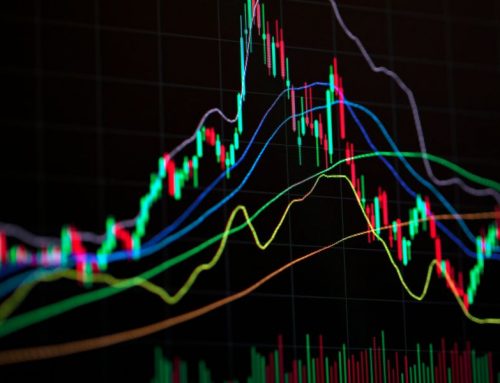What is strike price in options trading? This is the figure separating your options contract from getting in the money and earning you a profit or expiring worthless – and costing you the premium you paid. It’s among the most important component of any options contract – and we’re going to teach you everything you need to know about it today.
Maybe you’re just dipping your toes in the option-trading-waters and want to learn the stock options strike price meaning. Or, perhaps you’re hoping for advice on how to decide strike price in options contracts you write yourself. Whatever the case, one thing is for sure – you’ve come to the right place.
Our complete guide to stock options strike price is going to help you gain clarity and confidence on this subject. Below, we’ll discuss the importance of selecting the right strike price for your options contract. You’ll also learn about other key considerations when trading options. First, what is strike price in options trading?
Featured Courses:
What is Strike Price in Options Trading? With Examples to Fully Explain the Stock Options Strike Price Meaning
The strike price – sometimes referred to as the exercise price – is an integral part of any options contract. It’s the price point at which your contract will become profitable.
When you purchase an options contract, you’re making an educated guess as to how the price of a stock is going to move – either up or down. The strike price is the pre-determined price for which the stock in question must rise above or fall below – depending on which type of options contract you’re trading.
Should your theory prove true and the stock price does rise above or fall below the strike price, your options contract is “in the money” and exercising it would mean you earn a profit. What does it mean to exercise stock options, though? For those who are new to this style of trading, let’s take a step back and discuss how stock options work.
There are two types of options contracts – puts and calls. Puts give you the right (but not the obligation) to sell an underlying stock at the strike price, whereas calls give you the right (but not the obligation) to buy an underlying stock at the strike price. We haven’t even discussed the expiration date yet, but that’s an integral part of your options contract too – as we’ll discuss in greater detail later on.
You came here to learn what the strike price is in options trading with examples, and we’ve got an example below to help illustrate this better:
Imagine you’re interested in buying a call option for Company XYZ, which is currently trading at $50 per share. You find an option with a strike price of $55 and an expiration date one month from now. By purchasing this call option, you’re securing the right to buy shares of Company XYZ at $55 per share, regardless of its market price, until the option expires.
If Company XYZ’s share price rises to $60 before the option expires, you could exercise your call option and buy shares at the $55 strike price, making an instant profit of $5 per share (minus the cost of the option and any fees). If the share price doesn’t go above $55, you can let the option expire, and your loss would be limited to the cost of the option premium.
Why Choosing the Right Options Strike Price is so Important
Now that you have a better understanding of options strike price, we want to explain why this particular component of your options contract is so important.
As you may already be able to surmise, this is one of the factors that influence your likelihood of being profitable in the trade. But as you’ll learn below, that’s just one of the reasons choosing the right strike price for your options contract can’t be overlooked…
Risk-Reward Balance
We know what you’re thinking…can’t I just choose options contracts with strike prices close to the current market price and make it easier to get “in the money”? Sure, you could – but because these types of “at the money” contracts are more favorable, they cost more in premium. As a result, your profit potential is lower.
All of this is to say that there is a balance between choosing a strike price that favors you, but leaves you enough room to make money on the trade should you end up exercising the option. This is a classic case of risk/reward that you’ll have to answer for yourself.
Intrinsic Value and Time Value
But there are other reasons that options traders need to have a solid grasp on the principles of strike prices. This is where time value and intrinsic value need to be considered, both of which are affected by the strike price.
Intrinsic value represents the immediate profit potential if the option were exercised, while time value represents the option’s potential for future profitability. A well-chosen strike price can help you maximize the benefits of both intrinsic and time value, which can contribute to the overall profitability of your option trades.
Liquidity of Your Contract
The final reason to carefully consider the strike price of any options contract you trade is in the event you wish to sell the contract back on the market. What we’re talking about here is liquidity.
Liquidity is an important factor to consider when trading options because it affects the efficiency of entering or exiting a position, as well as the transaction costs associated with trading.
Liquid options generally have tighter bid-ask spreads, which means the difference between the highest price a buyer is willing to pay (bid) and the lowest price a seller is willing to accept (ask) is relatively small. This allows you to buy or sell options contracts at more favorable prices, reducing the cost of trading.
Conversely, when trading options with low liquidity, the act of buying or selling a large number of contracts may influence the market price itself. This price impact can make it more challenging to execute trades at your desired price levels, potentially affecting your overall trade performance.
How to Decide Strike Price in Options: Our Advice for Balancing Risk & Reward
All things considered, choosing the right exercise price is paramount to your success as an options trader. So with that said, let’s get to the fun part of this conversation – learning how to decide strike price in options.
Establish Your Trading Objective
First and foremost, it’s essential to define your trading objective. Are you looking to capitalize on capital appreciation, generate income, or hedge an existing position? Your primary goal will help guide your choice of strike price. It will also help you determine the rest of your options contract – like whether you buy a call vs put, your expiration date, etc.
Analyze the Underlying Asset
Once you’ve established your objective, it’s time to analyze the underlying asset. Conduct thorough research, including both fundamental and technical analysis, to develop an outlook on the asset’s future price movement. Assess factors such as financial performance, industry trends, and price patterns to inform your market view.
Consider Risk
After you determine how you think the stock’s price is going to move, it’s time to consider just how confident you are in that. In other words, how much risk are you willing to accept in the trade?
Understanding your risk appetite will influence your choice of strike price, as different strike prices offer varying risk-reward profiles. Remember that with strike prices that are at or near the money, you’ll pay more in premium – leaving less room for profit potential.
Evaluate Available Strike Prices
Depending on the specific stock you’re trading you may have no shortage of strike prices to choose from. Other, more illiquid stocks will be harder to configure in your favor. In assessing the different strike prices you have to choose from, remember these things:
- Intrinsic value: the immediate profit potential if the option were exercised. Options with strike prices closer to the current market price of the underlying asset have more intrinsic value.
- Time value: the option’s potential for future profitability. Options with longer time until expiration and strike prices closer to the market price typically have more time value.
- Probability of profit: Consider the likelihood of the option being profitable at expiration. Options with strike prices closer to the market price have a higher probability of being profitable, while those further away have lower probabilities
You should also take note of the liquidity of various strike prices – which is where assessing open interest in options trading comes into play. You want to choose a contract with a strike price that you can flip back on the open market if need be.
From there, it’s as simple as weighing the option premium and selecting whichever strike price aligns with your trading goals. Pretty simple, right?
Other Key Considerations When Trading Stock Options Contracts
There’s no denying the importance of strike price in options trading. But remember – this is just one of the moving parts in your options contract.
There’s the expiration date, of course – which is just as crucial in terms of options trading risk management. The longer time horizon you have to see your contract fall in the money, the more expensive it will be in premium.
Just as with the strike price, there’s a sweet spot to be found that offers you good value for the money without forcing you to take on too much risk. If you want to learn more about the expiration date of your contract, read our articles on when do stock options expire or what happens when stock options expire.
What’s even more important though, in our opinion, is the underlying stock itself. It doesn’t matter what strike price you choose if the stock itself is stagnant (unless you’re writing options contracts, of course, in which case this is actually a good thing!).
That’s why we encourage you to read our detailed guide on how to pick stocks for options trading. There, you’ll learn all about how to analyze a company and what to look for when buying puts or calls.
From complex technical indicators like moving averages and candlestick patterns to fundamental analysis and company news – there are so many ways to set yourself up for success in terms of finding the actual stock itself.
But, the easiest and most foolproof way is with the help of VectorVest. Our stock analysis software can help you uncover winning opportunities on autopilot – whether you’re interested in swing trading vs options trading, or any other strategy for that matter.
It helps you eliminate human error and guesswork by telling you exactly what to buy, when to buy it, and when to sell it. VectorVest has consistently called major market moves and even outperformed the S&P 500 index for the last 22 years – and it can help you do the same. You don’t have to just take our word for it either – get a free stock analysis today.
Wrapping Up Our Guide to the Stock Options Strike Price Meaning
So, what is strike price in options trading? As you now know, this is the price that dictates whether or not your contract ends up in the money and earns a profit or expires worthless – costing you a wasted premium.
It’s imperative that you’re able to consistently choose the right strike price in options trading as this influences your room for profitability along with your success rate as a trader. And since we walked you through how to decide strike price in options trading, you should feel confident in going out and doing just that.
But, if you want to learn options trading some more, our blog has all sorts of helpful resources worth exploring in regard to how to trade stock options. You can learn how options affect strike price, the benefits of trading stock options, how to sell stock options, when to exercise options, and more. Our guide to trading stock options for beginners is a great starting point if you’re still new to options trading.
Otherwise, it’s time to start doing some research on the stocks on your watchlist and decide the right strike price. With a bit of trial and error and the help of VectorVest, you’ll be winning options trades on autopilot in no time!
Featured Courses:








Leave A Comment